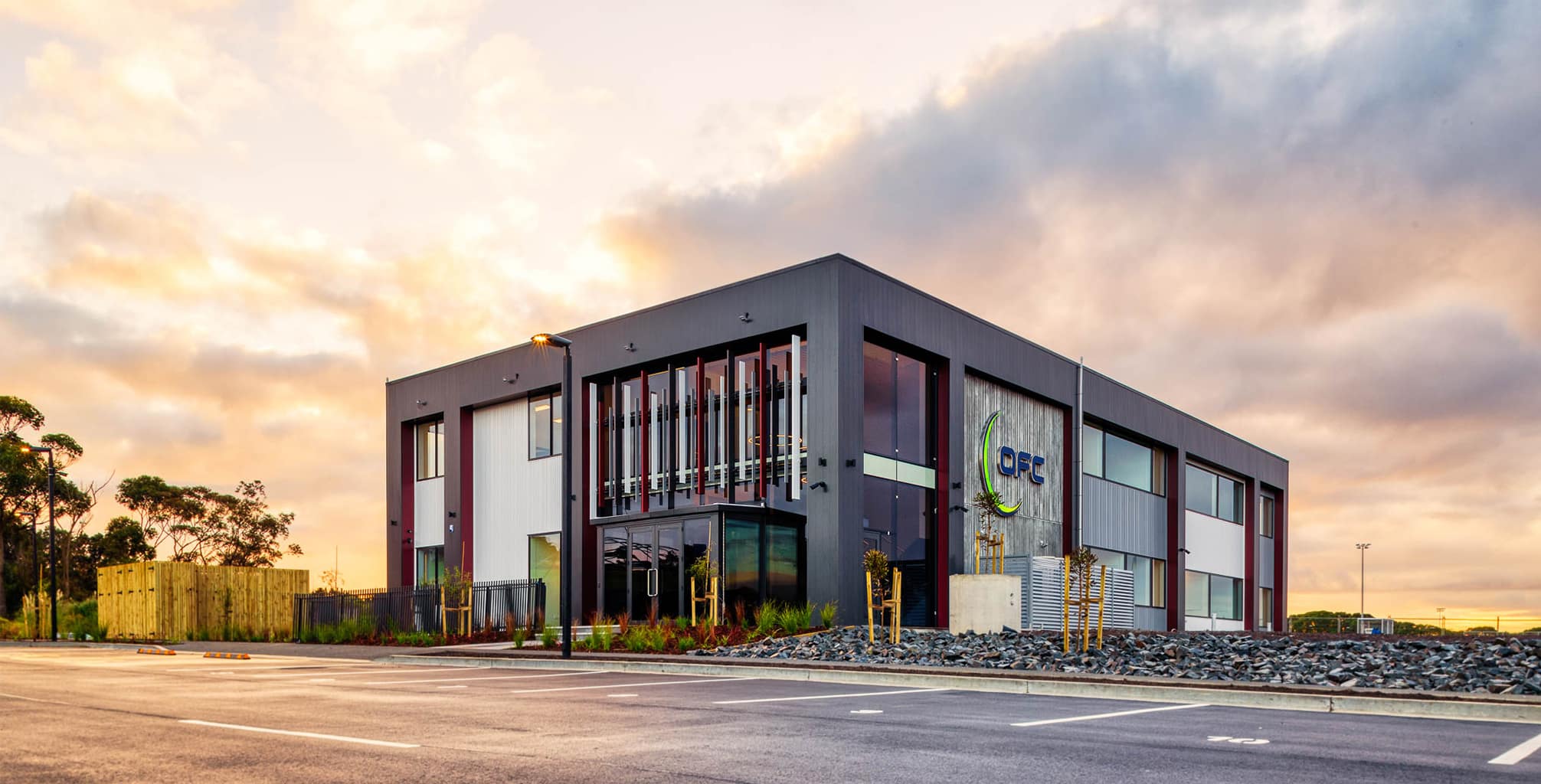Discover the Ingenious Providers Supplied by Commercial Architects for Your Following Task
Commercial architects play a necessary function in forming the developed atmosphere. They mix functionality with aesthetic allure, developing areas that resonate with brand name identity. These specialists utilize ingenious style remedies, lasting methods, and progressed modern technologies to improve user experiences. Their collective approach guarantees alignment with client visions and functional needs. The extent of their solutions often extends past design. The next actions in comprehending exactly how these architects navigate intricate job needs might shock you.
Recognizing the Duty of Commercial Architects
Although the duty of industrial architects might vary relying on the specific task, their primary function revolves around designing useful and visually enticing rooms for organizations. These experts are charged with understanding the distinct requirements of each client, whether it be a retail shop, workplace structure, or commercial facility. They perform detailed site analyses and team up with stakeholders to guarantee that the style straightens with the service purposes and brand name identity.Commercial architects likewise navigate various regulatory demands, securing conformity with zoning laws and building codes. Their proficiency reaches developing lasting layouts that promote power performance and ecological responsibility. In addition, they manage the job's timeline and budget plan, coordinating with service providers and engineers throughout the building procedure. By blending imagination with technical knowledge, industrial architects play a vital function in transforming conceptual concepts right into substantial facts, inevitably enhancing the capability and appeal of commercial spaces.
Ingenious Design Solutions for One-of-a-kind Spaces
As business rooms significantly demand diversity to stick out in open markets, ingenious layout services have actually come to be necessary for architects. These specialists utilize their creative thinking and technological know-how to craft one-of-a-kind environments that reflect brand name identity and enhance individual experience. By incorporating sophisticated modern technology and products, commercial architects can transform average areas into captivating venues that involve customers and influence employees.Architects employ numerous methods, such as adaptive reuse, which renews existing structures while protecting their historic relevance. They likewise explore unusual designs and multifunctional rooms that accommodate diverse requirements, guaranteeing flexibility for future growth.Furthermore, the unification of biophilic design-- bringing nature indoors-- produces inviting environments that promote well-being - commercial architects. This interest to information in innovative layout not just addresses visual problems but likewise cultivates area and cooperation. Inevitably, these tailored remedies enable businesses to grow in an ever-evolving landscape, setting them aside from competitors
Sustainable Style Practices
Sustainable style techniques have become a pivotal emphasis for business architects seeking to develop impactful styles that reverberate with ecological stewardship. These techniques prioritize the use of renewable energies, power performance, and minimal waste, showing a commitment to lowering the eco-friendly footprint of structures. Architects incorporate materials that are sustainably sourced or recycled, guaranteeing that building and construction methods align with eco-friendly principles.Furthermore, the integration of green roofing systems and walls improves biodiversity while enhancing power performance. Reliable water administration systems, such as rain harvesting, add to sustainability by saving water resources. Natural ventilation and daylighting techniques are likewise used to maximize indoor environments, minimizing reliance on man-made home heating and lights.
Integrating Technology in Architectural Layouts
A boosting number of commercial architects are welcoming modern technology as a transformative aspect in building style. By leveraging advanced software program tools such as Building Information Modeling (BIM), architects can produce detailed 3D representations of projects, permitting enhanced visualization and cooperation amongst stakeholders. This technology facilitates real-time modifications, lessening errors and improving the style process.Additionally, architects are integrating smart building innovations right into their designs, which improve energy performance and resident comfort. Features such as automated lights, climate control, and security systems can be effortlessly included, promoting sustainable techniques and lowering operational costs.The use digital and augmented truth additionally allows clients to experience designs prior to building starts, supplying vital insights right into spatial partnerships and visual choices. Eventually, the combination of modern technology in building layouts not just cultivates innovation yet likewise ensures that tasks are carried out with accuracy and lined up with modern demands.

Task Monitoring and Control Providers
Effective project administration and coordination solutions are crucial for the successful implementation of industrial building tasks. These solutions guarantee that all elements of a task, from preliminary design to last building and construction, are perfectly incorporated. Commercial architects play a significant function in collaborating in between different stakeholders, including clients, service providers, and providers, to maintain clear communication and positioning on job goals.By implementing structured methodologies, architects can take care of timelines, budget plans, and sources effectively, lessening hold-ups and cost overruns. They utilize job administration software application and tools to track progression, handle paperwork, and help with partnership amongst group members.Additionally, these services include threat assessment and mitigation methods, confirming potential obstacles are determined and dealt with proactively. The result is a streamlined process that enhances general project performance and top quality, ultimately leading to an effective end result that satisfies the client's vision and assumptions.
Governing Compliance and Zoning Assistance
Effective governing compliance and zoning support are vital for the success of any commercial project. Architects need to possess a deep understanding of local guidelines and zoning laws to lead clients with the complexities of the approval process. This experience not only assures adherence to lawful needs yet additionally helps optimize project design and capability.
Browsing Local Rules
Exactly how can industrial architects guarantee their styles align with regional guidelines? By remaining educated concerning the ever-evolving landscape of structure codes and regional ordinances, architects play an important function in making certain conformity. They carry out comprehensive research to recognize the certain regulations regulating products, safety standards, and building techniques suitable to every project. Collaborating internet carefully with regional authorities, industrial architects can navigate with the complexities of governing frameworks properly. They also promote required Read More Here licenses and examinations, simplifying the authorization process. This positive approach not only mitigates prospective legal issues but also improves task effectiveness. Inevitably, their experience in navigating regional guidelines encourages customers to realize their vision while sticking to all called for standards and standards.
Zoning Law Experience
Zoning regulation competence is vital for industrial architects guiding with the intricacies of land use guidelines. These architects have thorough expertise of regional zoning codes, which control building advancement, land use, and structure requirements. By understanding these regulations, they help clients navigate the commonly complex authorization procedures needed for building and construction projects. Their competence warranties compliance with zoning regulations, reducing the risk of project delays or lawful complications.Additionally, commercial architects supply beneficial support in acquiring needed licenses and variations, promoting smoother interactions with local authorities. They also use critical referrals to enhance website layout and make the most of the possibility of a residential property while adhering to zoning limitations. Ultimately, their zoning law proficiency plays a critical role in the successful realization of industrial projects.
Joint Methods With Customers and Stakeholders
Effective business architecture rests on the capability to foster strong partnership with customers and stakeholders throughout the style process - commercial architects. Architects participate in open discussions, guaranteeing that all parties' visions and needs are incorporated into the project. This collaborative approach starts in the first stages, where architects conduct workshops and brainstorming sessions, enabling clients to articulate their objectives and concerns.Stakeholder input is similarly vital; architects typically arrange meetings with community members, city governments, and various other relevant entities to gather varied viewpoints. By employing visualization tools, such as 3D modeling, architects promote much better understanding and communication.This repetitive responses procedure not only enhances layout quality but also constructs trust fund, resulting in even more effective outcomes. Ultimately, the collaborative ideology of commercial architects transforms ideas into useful areas that reflect the goals of clients and the wider area, ensuring a harmonious connection throughout the job lifecycle

Frequently Asked Concerns
What Is the Common Timeline for an Industrial Design Project?
The common timeline for a business architecture project varies, generally extending 6 to 18 months. Aspects influencing this period include job complexity, governing authorizations, and client responsiveness, impacting each phase from layout to building conclusion.
Just How Do Commercial Architects Fee for Their Services?
Commercial architects normally charge based upon project scope, intricacy, and size. Typical cost structures include per hour prices, repaired costs, or go to this website percentage-based costs determined from the complete building and construction expense, making certain transparency and positioning with customer assumptions.
Can Commercial Architects Aid With Inside Design?
Commercial architects can undoubtedly help with indoor style, incorporating capability and looks. Their competence assurances natural areas that straighten with architectural vision, boosting user experience while fulfilling governing requirements and client goals via cutting-edge style options.
What Kinds of Customers Do Commercial Architects Typically Collaborate With?
Commercial architects commonly collaborate with varied clients, including services, government entities, instructional establishments, and charitable companies (commercial architects). Each client seeks tailored architectural options to fulfill details functional and visual needs for their tasks and atmospheres
Just How Do Commercial Architects Remain Upgraded With Layout Fads?
Commercial architects remain updated with design fads via continuous education, attending industry conferences, involving in expert networks, and looking into arising innovations. They also collaborate with various other experts to gain understandings into ingenious products and design techniques.